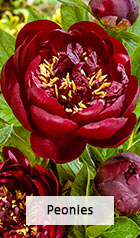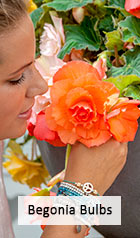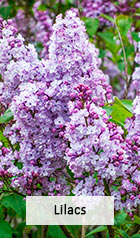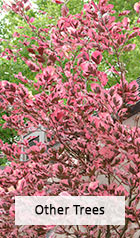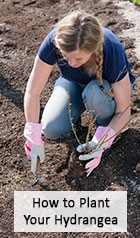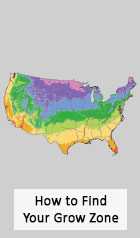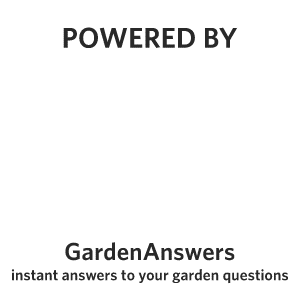- Fall Preview
- Perennials
Close X
Reliable color year after year.
- Bulbs
Close X
Fill your summer with blooms.
- Clematis & Vines
Close X
Provide ambiance and romance.
- Shrubs
Close X
Habitat, color & design possibilities.
- Trees
Close X
A gift for the next generation.
- Patio Orchard
- Fruits
- Tools & Décor
Close X
The right tools make gardening a pleasure.
- Spring Clearance
- Gardening Resources
Close X
Tips and tricks for easy, beautiful gardens.
Hyacinth Bulbs
Perfumes the spring air

Hyacinth bulbs produce beautiful and unique flower stems loaded with wonderfully fragrant florets in mid spring. Hyacinth bulbs produce flowers with a bold mix of colors, including yellow, white, purple, pink, and even blue. This flower is ideal for beds and borders or near a window to enjoy the incredible fragrance. Hyacinths are deer resistant and a favorite for bees coming out of hibernation in early spring. Easy to grow in your outdoor garden or even indoors in the winter, Hyacinthus plants come back year after year, delivering stunning flowers that are closely packed with tiny star-shaped blooms. Shop Spring Hill's favorite Hyacinth bulbs today!
When To Plant Hyacinth Bulbs
Like most other spring-blooming bulbs, hyacinth bulbs should be planted in the fall. These bulbs require a cold period before they're able to sprout, which is why they make such excellent forced bulbs indoors. Hyacinths grow from bigger, more tender bulbs than some other springtime bloomers, so they perform best when they go into the ground before it freezes. For best results, plant hyacinth bulbs after the temperature drops to 60 degrees or below, but before the earth begins to harden.
Another note on planting time—hyacinths can be directly planted into the ground in cool climates, but may need refrigeration before planting in warm zones. If your area never freezes, keep your hyacinths in the refrigerator for about three months before planting them in the springtime. For warm-season gardeners, your best bet for hyacinth success is to basically "force" the bulbs outdoors.
How To Plant Hyacinth Bulbs
Hyacinth bulbs should be planted in early to mid fall. But, is any special technique required to plant hyacinth bulbs? Despite their long bloom times and stunningly unique growth habits, hyacinths are planted just like any other bulb—pointed end up and about three times as deep as the bulb is tall.
Siting your hyacinth bulbs may be the most challenging step to planting. Hyacinths need full sun in order to produce their straightest stalks and biggest blooms, so choose a location that sees at least six hours of direct light each day. Taller varieties of hyacinths may create the perfect backbone to a sunny bed or border, or use shorter or dwarf hyacinths in the front of a planting. Hyacinths are among the first flowers to burst forth in springtime, so choose locations that need a joyful awakening in the early spring. Mix hyacinths among early daffodils and tulips, and your hyacinths will come into flower just as those very-early-spring bulbs begin to fade. Hyacinths also make amazing potted flowers, and are a staple in Easter-time planters and "lasagna" containers.
Once you've chosen a smart location for your hyacinths, loosen the soil of the planting site, and add in any amendments. Hyacinths are fairly tolerant of most soil types, but consider tossing in compost or loam if your soil suffers from heavy clay. Like other bulbs, hyacinths need well-draining soil for healthy roots and shoots. Space your hyacinths about six inches apart, and dig holes three times as deep as the bulbs are tall. So, if you have a two-inch-tall bulb, make sure it has at least four to six inches of soil covering. Plant with the roots facing down and the tip facing up, and water your hyacinths in well.
How To Force Hyacinth Bulbs
Hyacinths require a period of cold temperatures in order to bloom. Wintery conditions in northern and midwestern climates provide those free of charge, but hyacinths grown in the south or in containers will need to be forced to bloom. Luckily, these tall and fragrant beauties are some of the easiest and most rewarding bulbs for forcing.
In order to force hyacinth bulbs, simply chill the bulbs for at least twelve weeks, up to three months, before planting them. Use a cold garage, or space them apart on brown paper in the refrigerator. Make sure your bulbs receive near-complete darkness and temperatures below forty degrees for the majority of their chilling period.
So, can you force hyacinths by placing them directly into flower pots or into the ground? Yes, but they really thrive when they're allowed to warm up slowly. Start forcing your bulbs about six weeks before you want them to bloom, and take it slowly. To force hyacinth bulbs in water, place your bulbs into forcing glasses, special vases that allow the roots to grow while the bulb is not completely submerged. Or, lay out your bulbs atop a tray of very moist soil, then cover them with another inch of soil. No matter which method you use, you should keep your hyacinths in a dark, cool location as the rooting process begins. They should not be freezing, but should be kept under 60 degrees. A basement, cold shelter, or covered greenhouse works perfectly.
When the hyacinths have sprouted to about two inches tall, remove them from the dark and set them in a location that receives indirect light. You'll enjoy weeks of blooms in your home at any time of the year.
How To Store Hyacinth Bulbs
When planted in the garden, hyacinth bulbs can rebloom the following year. Forced hyacinth bulbs have a lower chance of reblooming, and are typically treated as annuals. In most locations, hyacinths do not need to be lifted and stored.
How To Care For Hyacinth
After your hyacinths have bloomed, they don't require much care, just a bit of watering during uncommon springtime dry periods. Wait until their foliage and blooms have died back before cutting down, to allow the bulbs to gather energy for the next growing season.
Over winter, hyacinths require very little care. A light mulching can insulate your bulbs from the cold. As the plants begin to shoot up in the spring, add a water-soluble, balanced fertilizer to the soil, and water the hyacinths weekly. These jewel-tone stunners really are among the lowest-maintenance plants in your garden—hyacinths offer all of the convenience of a bulb, with amazing fragrance and unique form.
When Do Hyacinth Bloom
Hyacinths are true mid-spring bloomers, coming after early daffodils and tulips but before glads and other late-spring flowers. Due to their spicy-sweet fragrance, hyacinths are a hit in Easter arrangements and Mother's Day bouquets, and are a sure sign of mid-spring.



